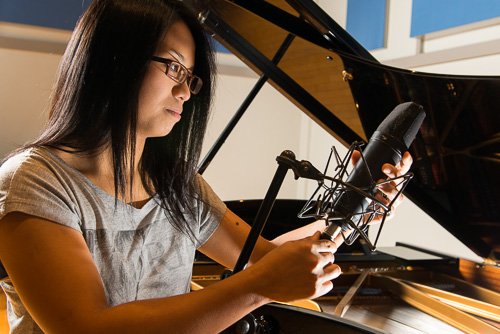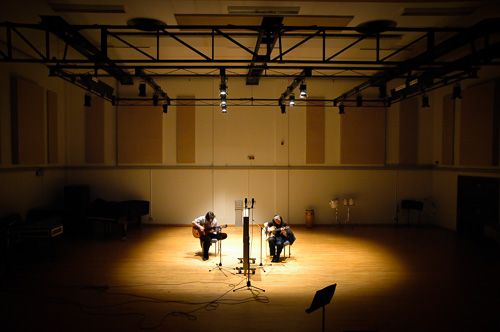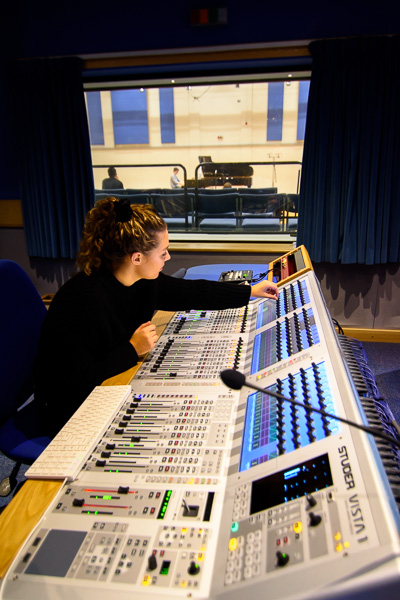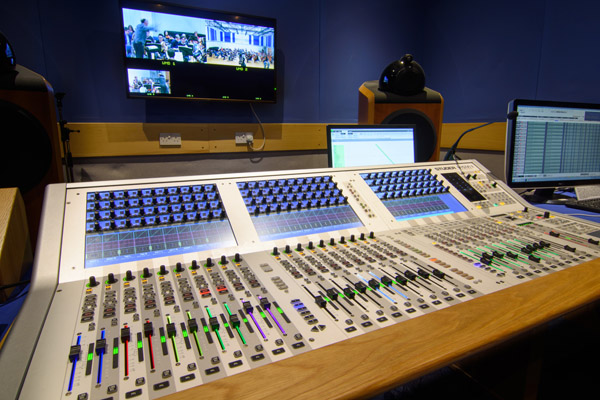Studio 1
Studio 1 is designed predominantly for recording 'classical' music. The studio floor is designed to be acoustically similar to a chamber concert hall, with a reverb time of around 1.1 to 1.5 seconds. The area of the studio floor is around 250 square metres, so it's possible to record anything from a solo singer to a large orchestra and choir. Also included are a Steinway D concert grand piano, a harpsichord, and a range of percussion equipment.

Whilst designed for classical music, the studio is used for all styles of music, with some students preferring to record drums in studio 1 for a more reverberant sound. The studio is also ideal for recording piano, strings and brass for pop tracks.

You can experience a binaural recording made in studio 1 in the video below - you'll need to wear headphones to get the best effect. To find out more about how it was made, you can read our blog post.
Studio 1 is also used for department concerts, including the Wednesday lunchtime concert series, all of which are recorded by Tonmeister students. These are valuable training opportunities for students: they are mixed direct to stereo and require a professional result in difficult circumstances. These recordings are also useful to students studying performance so that they can listen back to the recordings later and reflect on areas for improvement.

The control room acoustics were designed by Nick Whitaker (whose other work includes Angel, British Grove and De Lane Lea). The equipment has been selected because it is representative of that used in classical recording. It includes a Studer Vista 1 console, Lexicon 480 reverberation, B&W Nautilus 801 monitoring, and the Pyramix digital recording / editing system. Hence, the control room can be used for recording to stereo or multitrack formats, for multitrack editing, or for mixing pre-recorded sessions.

